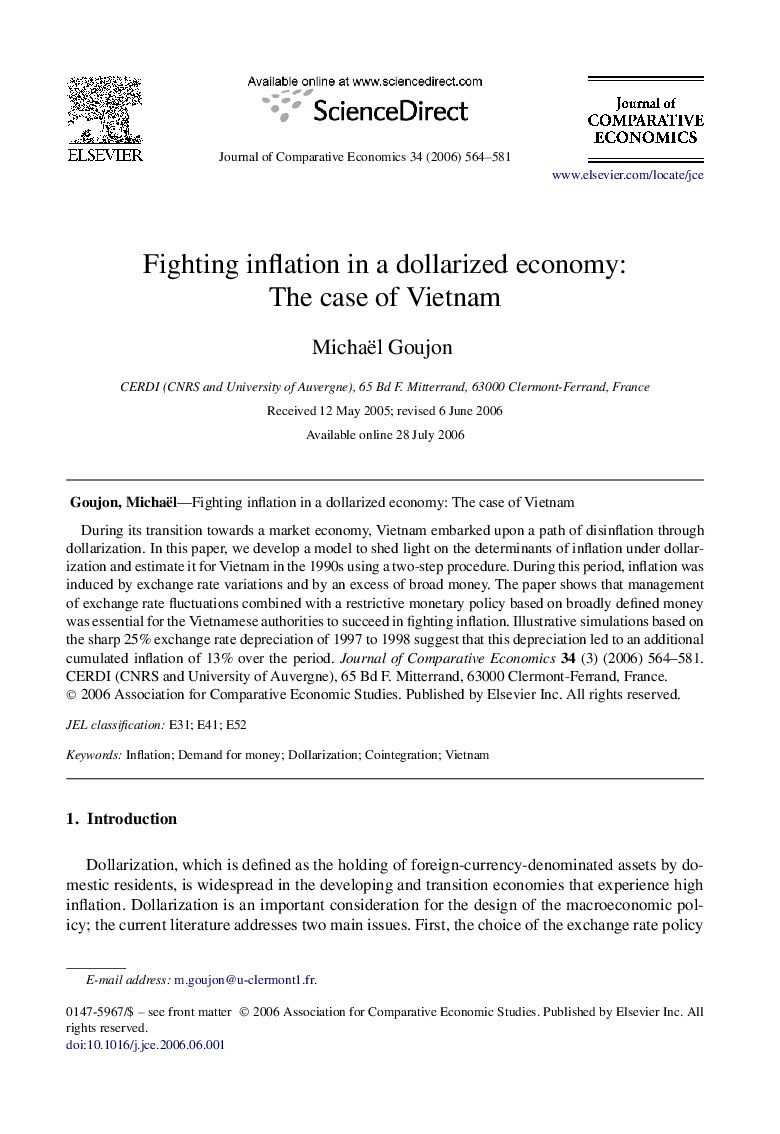| Article ID | Journal | Published Year | Pages | File Type |
|---|---|---|---|---|
| 5092671 | Journal of Comparative Economics | 2006 | 18 Pages |
Abstract
During its transition towards a market economy, Vietnam embarked upon a path of disinflation through dollarization. In this paper, we develop a model to shed light on the determinants of inflation under dollarization and estimate it for Vietnam in the 1990s using a two-step procedure. During this period, inflation was induced by exchange rate variations and by an excess of broad money. The paper shows that management of exchange rate fluctuations combined with a restrictive monetary policy based on broadly defined money was essential for the Vietnamese authorities to succeed in fighting inflation. Illustrative simulations based on the sharp 25% exchange rate depreciation of 1997 to 1998 suggest that this depreciation led to an additional cumulated inflation of 13% over the period. Journal of Comparative Economics 34 (3) (2006) 564-581.
Related Topics
Social Sciences and Humanities
Economics, Econometrics and Finance
Economics and Econometrics
Authors
Michaël Goujon,
